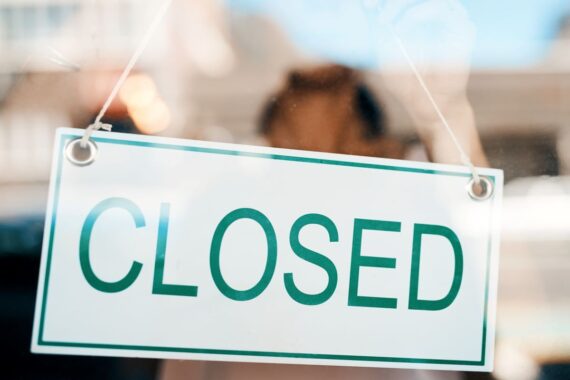Exclusive Nearly 60 GP practices across the UK closed their doors last year, a Pulse investigation has revealed.
There has been a sharp rise and fall in the number of practice closures over the last decade, increasing from 11 in 2013 to a peak of 163 in 2018.
But the number has steadily decreased over recent years to 57 last year, according to figures obtained by Pulse via freedom of information requests to all ICBs and health boards.
The data covers full practice closures, branch closures and surgeries that closed following a merger.
Year Practice closures 2013 11 2014 42 2015 69 2016 88 2017 77 2018 163 2019 92 2020 82 2021 55 2022 57
Last year, these closures affected at least 143,000 patients, based on the 32 instances for which data was available.
Small practices were most likely to be affected, with a median list size of 3,963 compared with a median list size of 8,551 in England as of November this year.
Pulse’s major Lost Practices investigation last year revealed that 474 GP surgeries across the UK have closed since 2013 without being replaced, and that they were more likely to be smaller practices on lower funding in more deprived areas.
Practice closures across the UK – 2022
- England – 42
- Scotland – 7
- Wales – 8
- Northern Ireland – 0
These figures are based on freedom of information responses from all 42 ICBs, 13 out out of 14 Scottish health boards, all 7 Welsh health boards, and Northern Ireland’s Strategic Planning and Performance Group (SPPG).
Of the 57 closures last year, in 22 cases the patient list was dispersed following a full closure.
In Gateshead, a single-handed practice with around 3,200 patients closed at the end of 2022 following the unexpected death of the sole partner.
Gateshead and South Tyneside LMC chair Dr Paul Evans told Pulse: ‘The practice was then put on the emergency contract until the end of March to give the ICB time to decide what they were going to do with it.
‘And in that time, a good chunk of patients left the practice therefore placing extra strain on other practices. And then at the end of the time, the other patients were allocated to other practices in the area.’
This influx of new patients, combined with recruitment problems, led one practice in the area to formally close its list.
Pulse’s latest investigation revealed how list closure applications have gone up over the last five years, despite practice closures going down.
Last year, over a third of GPs responding to Pulse’s survey reported absorbing extra patients as a result of local practice closures in the last three years.
Some GPs said they had added 1,000 or more new patients to their list.
A GP partner in North East London, who wished to remain anonymous, told Pulse that her practice is looking to merge with another due to concerns about future viability.
‘I’m looking to increase my 5,000 list size to 15,000 by speaking to another local practice – to be truthful, that certainly isn’t my ideal, because I think that smaller practices give much better continuity of care.’
She warned about the risk to small practices, highlighting that most do not have the capacity to do forward planning.
‘I personally think any list under 10,000 is at huge risk, to be honest. I’ve had to think about how to protect my practice for the future. I don’t think everybody’s even realised that they’re at definite risk,’ she added.
Responding to Pulse’s data, BMA GP Committee England chair Dr Katie Bramall-Stainer said seeing more practices close over the past year is ‘deeply concerning’ but represented the ‘current state of general practice’.
She said: ‘Losing your GP practice means losing that vital continuity of care that keeps people well, improves health outcomes and which makes general practice the bedrock of the NHS in the UK.
‘But we have lost thousands of fully qualified, full time equivalent GPs since 2015, which has coincided with a demise in the continuity of care, and unsurprisingly, resulted in a workforce which is stretched beyond capacity.’
Dr Bramall-Stainer blamed the crisis on the Government’s ‘failure to meaningfully invest in general practice’ and failure to ‘keep surgeries open’ – she warned this will ‘deepen’ health inequalities further.
‘Ultimately, we need more investment for general practice that supports our workforce, reverses the long-term decline in GP numbers and prevents more practices from closing,’ she added.
GP spokesperson for the Doctors’ Association UK Dr Steve Taylor said that due to ‘rising population’ any practice closure is ‘a problem for patients and the remaining GP practices’.
He said: ‘There has been a steady increase in number of patients per GP, which is now 1 per 2300 patient up from 1 per 1938 in 2015.
‘New practices should be opening, and closures demonstrate how hard it is for GP practices to keep going with reduced real terms funding.’
Although no practice closures were recorded for 2022 in Northern Ireland, 19 practices have handed back their contract since July last year.
BMA Northern Ireland’s GP Committee chair Dr Alan Stout told Pulse that each of these hand-backs becomes ‘full-blown crisis management’ and they are dealt with by a ‘series of sticking plasters’.
‘We’re in a position where they say there are no practice closures simply because everybody has bent over backwards trying to come up with some sort of crisis solution in these circumstances,’ he added.
Earlier this year, a study found that practice closures are linked with reduced patient satisfaction with services at the surviving practices as well as proportionally less GPs and funding.
Pulse October survey
Take our July 2025 survey to potentially win £1.000 worth of tokens












